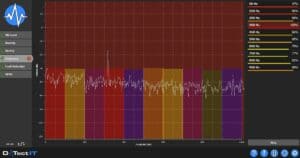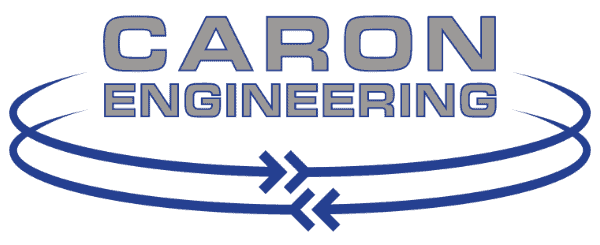 Caron Engineering’s DTect-IT was first introduced in 2016 as a product primarily used for detecting vibration levels and irregularities anywhere on a CNC machine tool or fixture; with featured applications of bearing analysis and barfeeder vibration detection (and correction).
Caron Engineering’s DTect-IT was first introduced in 2016 as a product primarily used for detecting vibration levels and irregularities anywhere on a CNC machine tool or fixture; with featured applications of bearing analysis and barfeeder vibration detection (and correction).
DTect-IT has become even more versatile since its inception, now capable of communicating with multiple sensors, including vibration, strain (to measure force), high precision power, and analog (which allows connecting any sensor with a 0 to ± 10 VDC analog signal, and 4 – 20 mA current signals). DTect-IT software has multiple analysis options allowing the user to monitor and scrutinize sensor data in various ways.
Using limit analysis, the user can set limits to monitor any of the compatible sensors. DTect-IT has a new learn mode to automatically set limits based on the acquired (learned) sensor data or limits can be set manually using adjustable sliders. When a defined limit has been met or exceeded, alarms and notifications occur.
Barfeeder vibration detection has been a widely used application with limit analysis. By attaching a vibration sensor to the barfeeder, limits can be set to detect excessive vibration levels due to imperfections in the bar. DTect-IT can signal the CNC to reduce spindle RPM until the vibration levels are acceptable to make good parts or even stop the machine if extreme vibration levels are detected. This application is greatly reducing scrap rates and decreasing spindle damage due to excessive vibration by detecting and compensating for imperfections in real-time instead of machining a whole (bad) bar of parts.
With bearing analysis, DTect-IT analyzes the velocity and acceleration signatures of a vibration sensor (attached to the spindle) to monitor spindle bearing health. Results are displayed within 5 seconds, and reports are automatically generated and saved for future analysis. Using the built-in data viewer, users can trend bearing data over time to establish maintenance schedules.
Fault detection analysis can be used with any sensor to identify an excessive condition, such as machine impact, overheating, extreme vibration, etc. DTect-IT recognizes when upper and lower limits are exceeded and records data on either side of the fault for analysis.
The newest analysis option with DTect-IT is frequency analysis. DTect-IT can monitor the frequency levels of any sensor and set magnitude limits to monitor and detect anomalies within specific frequency bands. Alarms and notifications are generated when magnitude limits (in decibels) are exceeded.
The combination of sensor options and analysis options (of which multiple can be run simultaneously for each sensor), make the applications for this product almost limitless. Many of the more prominent applications, include the abovementioned barfeeder vibration detection and bearing analysis, but DTect-IT is also widely used to for tool wear and breakage detection, yoke strain detection, tapping operations, coolant and temperature monitoring, machine health, preventative maintenance, and more.
DTect-IT offers a lot of functionality and features ideal for a smart manufacturing environment. It is best for monitoring up to four tools. It can run as a standalone application or easily connects to the CNC to command start and stop variables. DTect-IT can set sensor levels and alarms with variables that can be used by the CNC part program to make adjustments. DTect-IT has a data collection analysis to collect raw data from any sensor (up to 62,500 data points/sec).
The latest release of DTect-IT includes a new analysis viewer. All monitored data is stored and can be accessed via the DTect-IT Viewer for inspection, review, and analysis. The MTConnect compatibility allows users to interrogate sensor information on various levels and provides seamless communication with shop floor automation systems.






